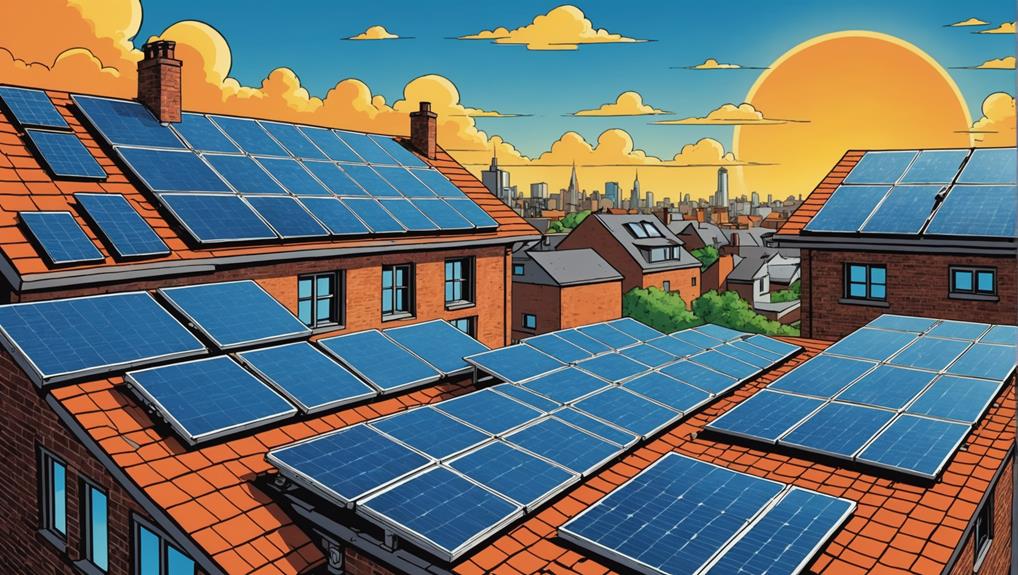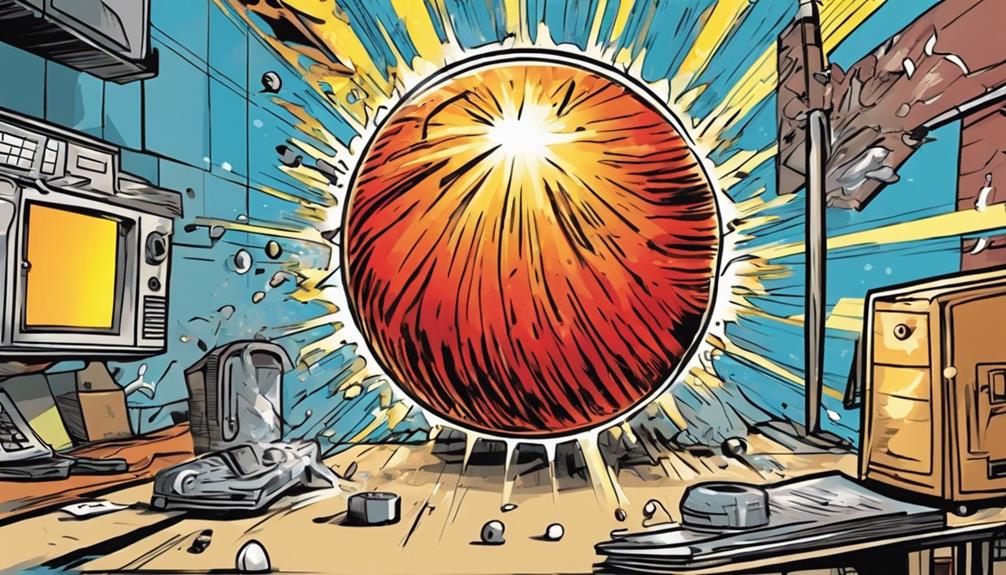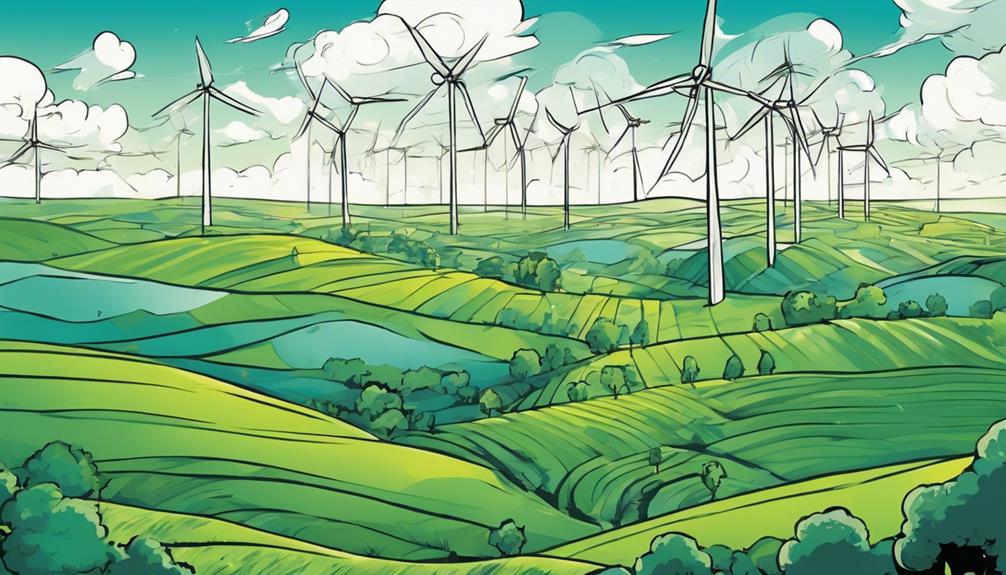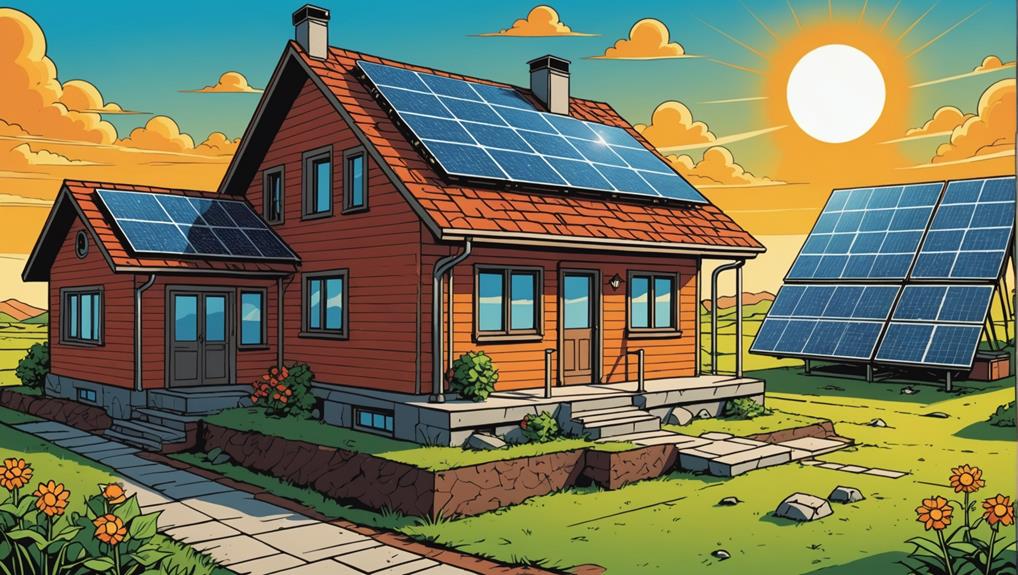When choosing between photovoltaic and solar panels, consider solar PV for whole-home electricity and solar thermal for heating water and spaces. Solar PV systems use panels to generate electricity, while thermal systems absorb heat for heating applications. PV technology is cost-effective and efficient for sustainable energy, suitable for powering homes. Meanwhile, thermal technology is up to 70% more heat-efficient, ideal for water heating. Each has its advantages and lifespan factors to weigh. Understanding these differences will guide you in selecting the best technology to meet your energy needs effectively.
Key Takeaways
- Solar PV generates electricity for whole-home power, while solar thermal is for water and space heating.
- Solar PV is cost-effective for long-term savings, while solar thermal is efficient for water heating.
- Solar PV lasts 25-30 years and suits various residential applications; solar thermal lasts 20-25 years.
- Integrating both technologies enhances energy efficiency and sustainability for residential use.
- Consider installation space, upfront costs, and specific energy needs when choosing between solar PV and solar thermal.
Solar PV Vs. Solar Thermal Overview
When deciding between solar PV and solar thermal systems, understanding the fundamental differences in how they harness solar energy is essential. Solar PV systems use photovoltaic panels to directly convert sunlight into electricity, while solar thermal systems utilize thermal panels to produce thermal energy for heating purposes.
The main distinction lies in how these systems capture and utilize solar energy: PV systems convert solar energy into DC electricity, suitable for powering entire homes, while thermal systems absorb and transmit the sun's heat for heating applications.
In essence, solar PV systems are designed to generate electricity, making them ideal for households looking to power their homes with renewable energy. On the other hand, solar thermal systems are better suited for those primarily seeking to harness solar energy for heating purposes.
Solar Photovoltaic System Components
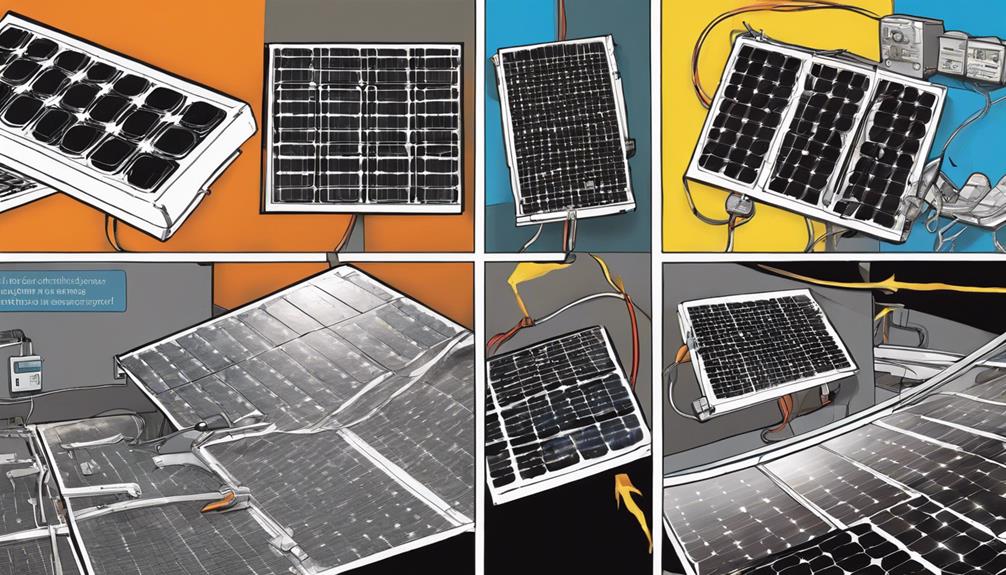
When setting up a solar photovoltaic system, you'll need to understand the key components involved.
These include:
- Panels
- A charge controller
- A battery bank
- An inverter
- A utility meter
Each of these elements plays an essential role in harnessing solar energy efficiently for your electricity needs.
PV System Components
The components of a PV system, also known as solar photovoltaic system components, are essential for converting sunlight into usable electricity.
Photovoltaic panels, consisting of semiconductor materials, harness the photovoltaic effect to generate electricity from sunlight.
An inverter is essential in the system as it converts the direct current (DC) power produced by the panels into alternating current (AC) power suitable for household consumption.
Additionally, a charge controller regulates the power flow to the battery bank, which stores excess energy for later use.
By utilizing these components effectively, PV systems offer renewable energy solutions, powering entire homes and potentially reducing electricity bills.
Understanding the role of each component empowers you to make informed decisions when considering solar energy as a sustainable and cost-effective option for your energy needs.
Key PV Components
Key components of a solar photovoltaic system include panels, inverters, charge controllers, battery banks, and utility meters.
Photovoltaic panels play a pivotal role in the system as they utilize semiconductor materials to convert light photons into voltage, enabling the generation of electricity.
The inverter is responsible for converting the direct current (DC) power produced by the panels into alternating current (AC) power, which is used to run household appliances.
A charge controller regulates the electricity flow from the solar panels to the battery bank for storage, ensuring efficient energy management.
The battery bank stores excess electricity generated during peak sunlight hours for use when sunlight is limited.
Additionally, the utility meter tracks the electricity produced by the PV system and monitors any surplus energy that's fed back into the grid.
These key components work together seamlessly to harness solar energy and provide sustainable power for your home.
Inverter Functionality
Maximizing solar energy efficiency in your PV system relies heavily on the functionality of the inverter. In a solar photovoltaic system, the inverter is a vital component that converts the DC electricity produced by the solar panels into AC electricity suitable for household appliances.
For grid-tied PV systems, inverters are necessary to synchronize solar power with the utility grid, allowing excess energy to be shared or stored for later use. Different types of inverters, including string inverters, microinverters, and power optimizers, offer distinct advantages in terms of system performance and monitoring capabilities.
String inverters are cost-effective but can be impacted by shading issues, while microinverters optimize individual panel output. Power optimizers, on the other hand, enhance energy harvest by allowing each panel to operate independently.
Choosing the right inverter type for your photovoltaic system is essential in ensuring the best energy production and long-term efficiency.
Advantages of Solar PV Technology
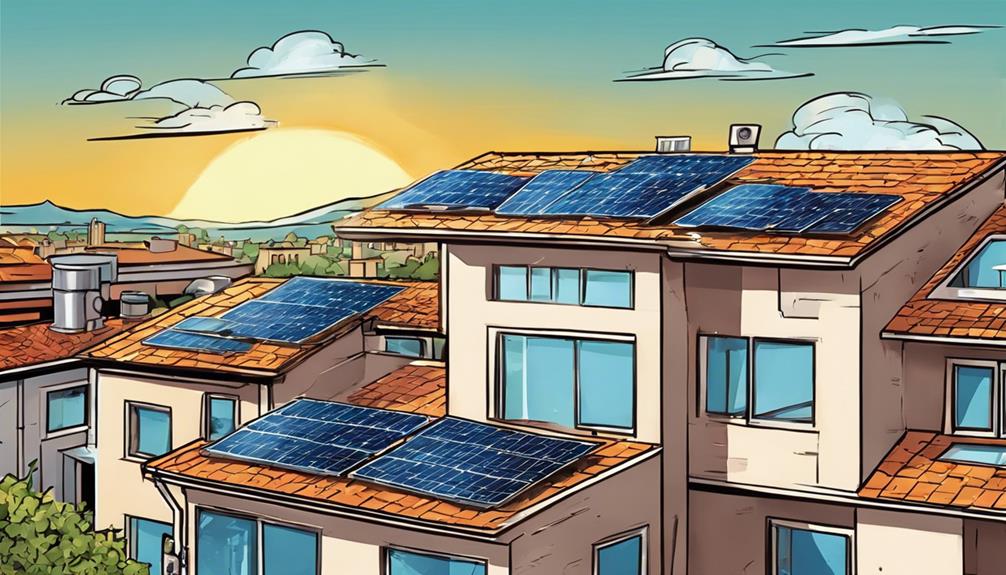
When it comes to the advantages of Solar PV technology, you'll find that it offers cost-effectiveness by reducing electricity bills and providing long-term savings.
Solar PV systems are highly efficient and reliable, covering a significant portion of your household energy needs.
Additionally, their versatility allows for year-round energy generation, making them a sustainable investment for your home.
Cost-effectiveness of Solar PV
Solar PV technology's cost-effectiveness is evident through long-term savings on electricity bills. While there's an initial investment for photovoltaic panels, they offer a recoupable cost over their 25-30 year lifespan, covering up to 60% of household energy needs. This reduction in reliance on external power sources translates to significant savings in the long run.
Additionally, grants and free panel options are available, helping to offset the upfront expenses associated with solar PV technology. By investing in solar PV systems, you not only contribute to a sustainable and renewable energy solution but also open yourself up to potential long-term financial benefits.
The financial advantages of solar PV technology make it a compelling choice for those looking to reduce their carbon footprint while saving on electricity costs over the years.
Efficiency in Solar PV
Enhancing the efficiency of photovoltaic panels can greatly boost their electricity generation capacity and overall performance. Solar PV panels come in two main types: monocrystalline and polycrystalline. Monocrystalline panels offer higher efficiency, ranging from 17% to 22%, while polycrystalline panels are slightly less efficient, typically between 15% to 17%.
The efficiency of solar PV technology plays a pivotal role in converting sunlight into electricity with sustainable power solutions.
Efficiency ratings of solar PV panels generally fall between 15% to 22%, depending on the panel type. The higher the efficiency rating, the more electricity the panels can generate. This factor is essential as it directly impacts the overall performance of the system.
Versatility of Solar PV
Harnessing the versatility of photovoltaic technology can revolutionize how households meet their electricity needs. Solar PV systems provide a renewable energy source that not only reduces reliance on external power but also leads to lower electricity bills and long-term cost savings.
With a lifespan of around 25-30 years, solar PV systems are a sustainable investment for homeowners looking to cut down on expenses. These systems are highly efficient in generating electricity for residential use, covering up to 60% of household energy needs.
Additionally, solar PV technology is a versatile solution capable of powering high-energy appliances and providing whole-home electricity. By investing in solar PV, you can significantly lower your electricity bills while contributing to a greener, more sustainable future for your household.
Disadvantages of Solar PV Systems
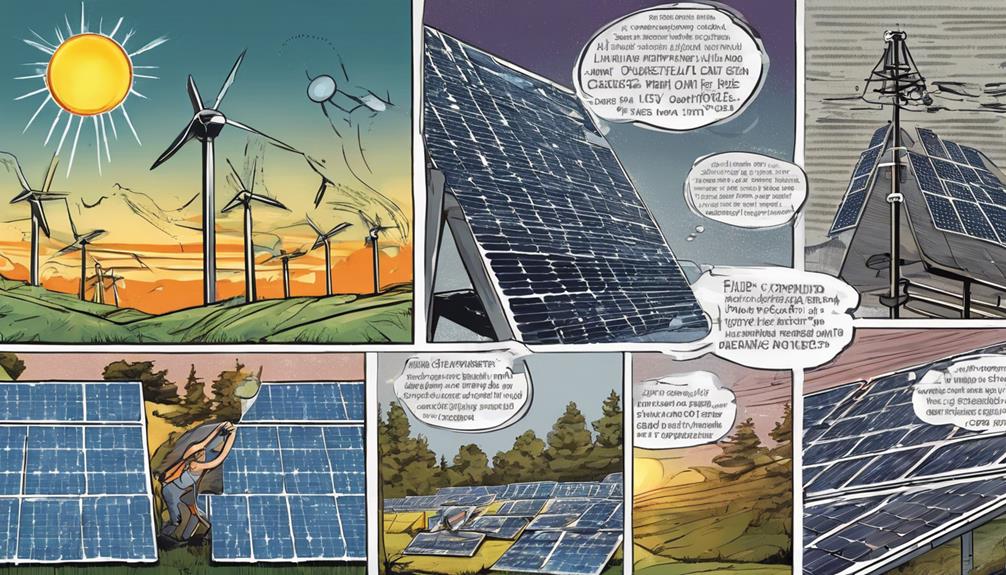
Considering the high initial costs and space limitations, opting for photovoltaic systems may pose disadvantages for homeowners. Solar PV systems often come with a significant upfront investment, potentially making them less accessible for some individuals.
Additionally, the installation of PV systems requires adequate space, which could be a constraint for properties with limited rooftop area or land availability. Retrofitting homes for radiant heating using PV technology may not always be feasible due to these space constraints.
Furthermore, the visual aesthetics of PV systems mightn't align with everyone's preferences, impacting the decision to install them. It's crucial to understand that grid-tied PV systems are essential for converting DC power generated by solar panels into usable AC power for residential electricity consumption.
These factors should be carefully weighed when considering the drawbacks of solar PV systems for your home.
Solar Thermal System Components
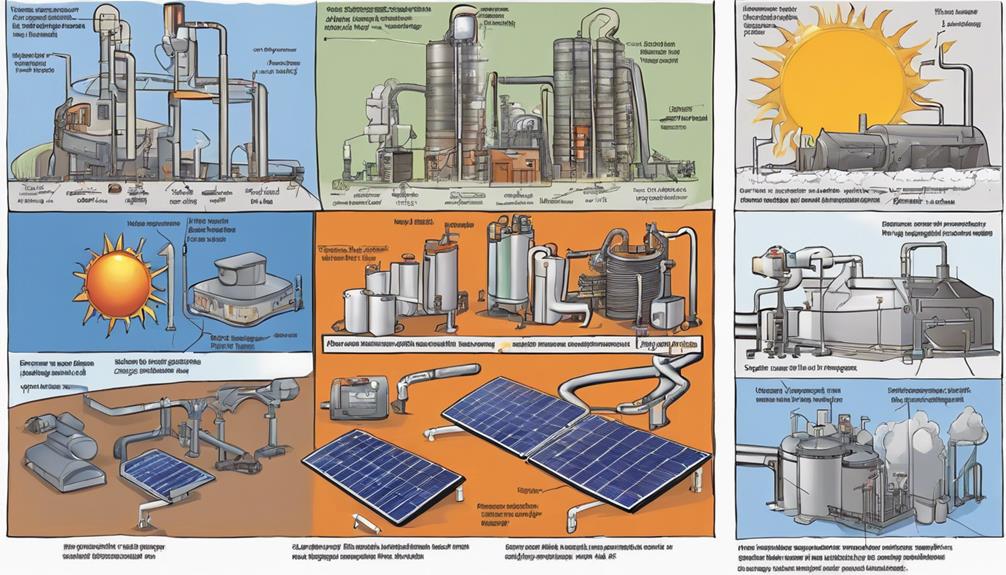
When comparing solar thermal systems to solar PV systems, it's important to understand the components that make up these heating systems.
Solar thermal systems consist of flat-plate collectors with absorber plates, support structures, glazing sheets, copper pipes, and insulation. On the other hand, evacuated tube collectors in solar thermal systems include transparent glass tubes, borosilicate/soda lime inner tubes, absorber plates, heat pipes, and vacuum insulation.
These systems rely on pumps and control systems for fluid circulation and temperature regulation to harness solar energy effectively for heating purposes. Solar thermal panels are primarily utilized for heating water in residential and commercial settings, providing a renewable energy source with minimal maintenance requirements.
Despite being less efficient than solar PV panels, solar thermal systems are well-suited for heating water and can also be applied to space heating and cooling applications, offering versatility in sustainable energy utilization.
Advantages of Solar Thermal Technology
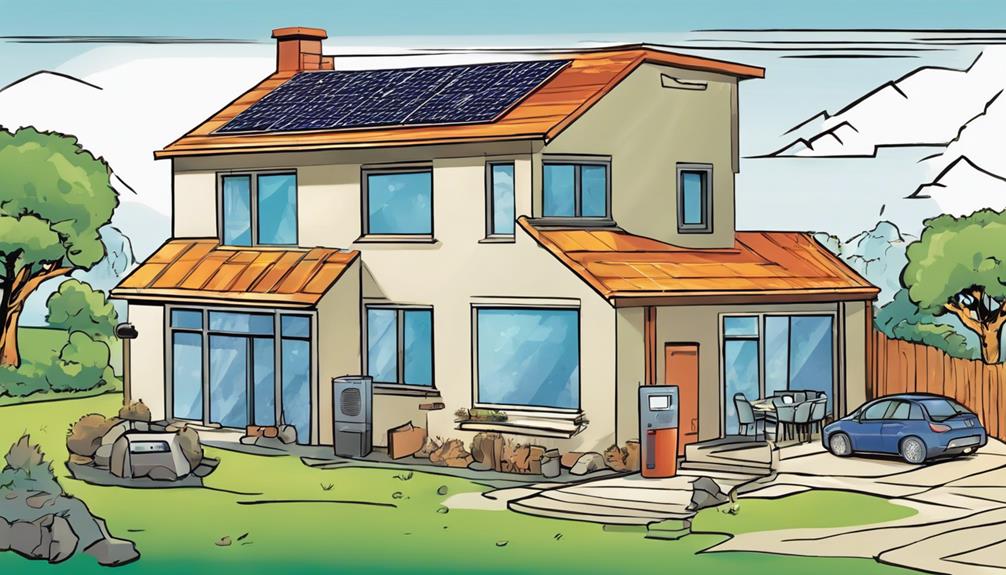
Solar thermal technology offers significant advantages in efficiency and practicality compared to solar PV systems. Solar thermal systems can be up to 70% more efficient in collecting heat, making them a space-efficient solution ideal for water heating applications in both residential and commercial settings. The technology behind solar thermal panels is simpler compared to solar PV panels, making it a more straightforward option for those looking to harness solar energy for heating water. Businesses can benefit from solar thermal technology by reducing their energy costs over time through the use of these systems.
| Advantages of Solar Thermal Technology | |
|---|---|
| 1. Efficient | Solar thermal systems are up to 70% more efficient in collecting heat. |
| 2. Space-Efficient | Ideal for water heating applications due to its compact design. |
| 3. Cost-Effective | Helps in reducing energy costs for both residential and commercial users. |
Disadvantages of Solar Thermal Systems
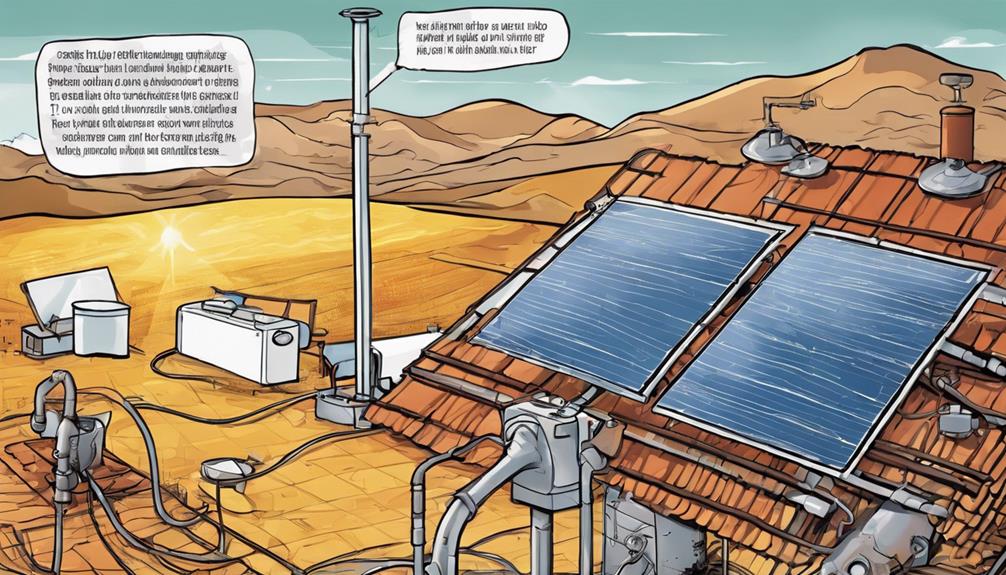
In weaker sunlight conditions, solar thermal systems demonstrate less effectiveness compared to solar PV systems.
While solar thermal technology is well-suited for water heating applications, its specialized nature can be a drawback when considering residential energy needs beyond water heating purposes.
Another disadvantage of solar thermal systems is their shorter lifespan of around 20-25 years, which is less than that of solar PV panels.
Additionally, finding suppliers for solar thermal systems can be time-consuming due to the specialized nature of the technology. This can make the installation and maintenance of solar thermal panels less practical for many homeowners seeking a more versatile energy solution.
Hence, when considering the disadvantages of solar thermal systems, it's essential to weigh these factors against the specific requirements of your energy needs to make an informed decision.
Comparison of Solar PV and Solar Thermal
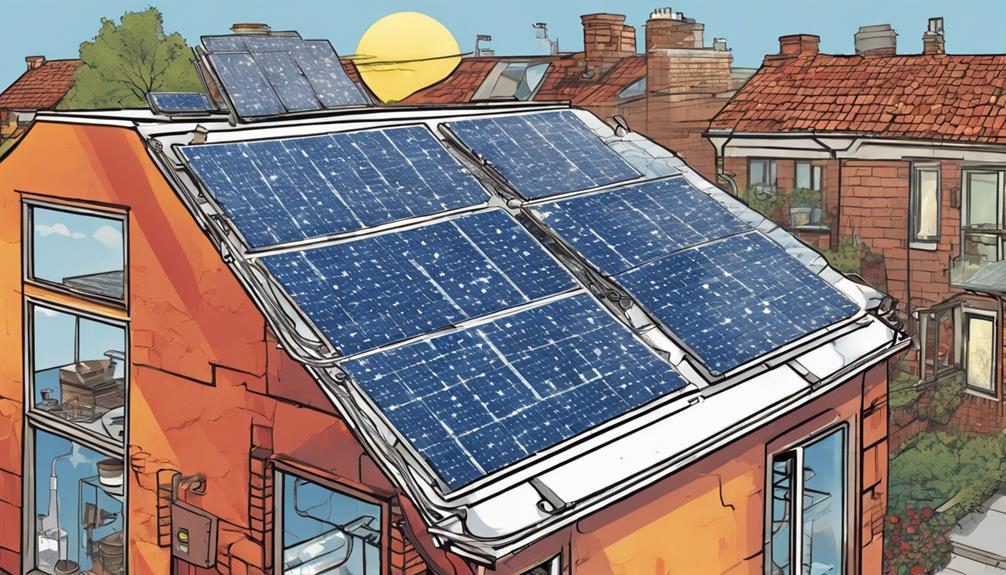
How do solar PV systems differ from solar thermal systems when it comes to energy conversion and utilization?
Solar PV systems utilize photovoltaic panels to directly convert sunlight into electricity, whereas solar thermal systems are designed to produce thermal energy for heating applications.
The technology behind PV systems involves the conversion of sunlight into DC electricity, while thermal systems absorb and transmit the sun's heat for heating purposes.
Solar PV systems excel in generating electricity for whole-home power, while solar thermal systems are commonly used to heat water or residential spaces.
Understanding the distinctions between PV and thermal systems is pivotal for selecting the most suitable technology based on specific needs for electricity generation or heating.
Lifespan and Residential Use Factors
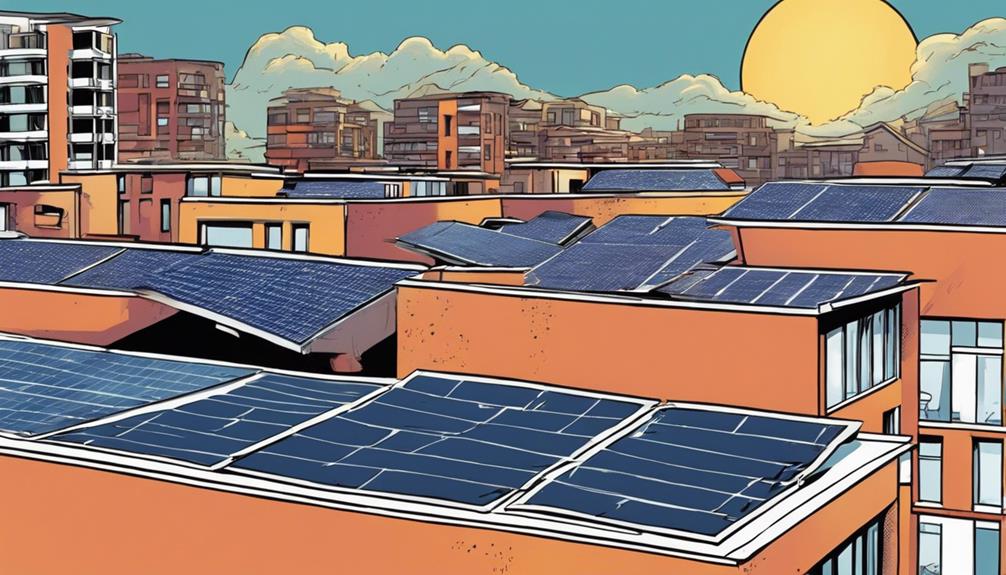
To gain insight into the lifespan and residential use factors of solar PV and solar thermal systems, consider the maintenance requirements and longevity of each technology.
Solar PV systems typically last 25-30 years, suitable for various residential applications to cover electricity needs. On the other hand, solar thermal systems have a lifespan of around 20-25 years, specializing in water and space heating.
Integrating both technologies can enhance energy efficiency and sustainability, meeting diverse residential energy requirements effectively. Solar PV systems require installation space and have upfront costs that can be recouped over time.
In contrast, solar thermal systems are space-efficient and boast up to 70% higher efficiency in heat collection. Understanding these distinctions helps in selecting the most suitable system based on specific energy needs for residential use.
Consider these factors carefully to make an informed decision tailored to your residential energy demands.
Solar Panel Types and Characteristics
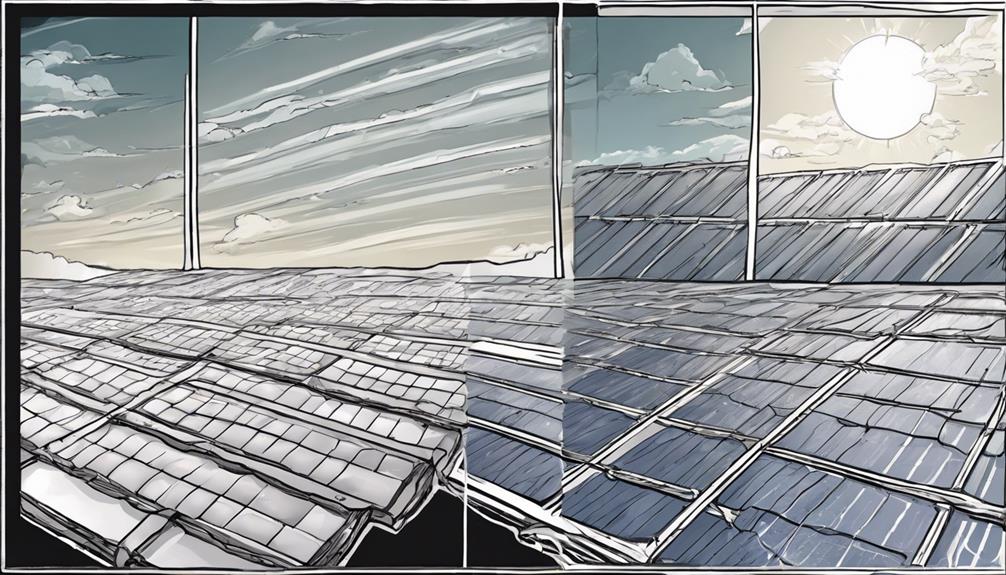
Consider the various types and characteristics of solar panels to make an informed decision on the most suitable option for your energy needs.
Monocrystalline panels boast efficiency ratings of 17% to 22% and power outputs exceeding 320 watts, making them perfect for rooftop installations. They have a sleek design and are the priciest.
On the other hand, polycrystalline panels offer efficiency ratings ranging from 15% to 17% and power outputs typically between 240 to 300 watts, known for being a budget-friendly option. They historically have been more economical with a marbled blue appearance.
Thin-film solar panels, commonly found in industrial settings, have efficiency ratings around 10-13% and are the most cost-effective among solar panel types.
When choosing a solar panel type, consider not only efficiency and power output but also factors like installation location, budget, and specific energy needs.
Frequently Asked Questions
Are Photovoltaic Panels Better Than Solar Panels?
Yes, photovoltaic panels are better than solar panels for generating electricity as they directly convert sunlight into power with semiconductor materials. Solar panels, on the other hand, are mainly used for producing thermal energy.
Which Is Better, PV or Csp?
When deciding between PV or CSP, consider the project scale, energy needs, and costs. PV panels offer higher efficiency in generating electricity for smaller setups, while CSP systems excel in utility-scale power generation through concentrated solar heat.
Is Photovoltaic the Same as Solar?
Yes, photovoltaic technology is a type of solar technology. It directly converts sunlight into electricity through panels. Understanding this distinction is essential for determining the most suitable system for your specific energy needs.
What Are the Disadvantages of Monocrystalline Solar Panels?
When choosing solar panels, remember, monocrystalline panels, though pricier due to their intricate manufacturing, excel in various climates. Their shading sensitivity and cost may deter some, but efficiency and compactness make them a top choice.
How Does Passive and Active Solar Energy Compare to Photovoltaic Panels in Terms of Efficiency and Cost?
Passive and active solar energy harness the sun’s heat and light using building design and mechanical systems, while photovoltaic panels directly convert sunlight into electricity. The key difference between solar energy systems lies in their efficiency and cost. Photovoltaic panels are more efficient but also more expensive compared to passive and active solar energy.
What are the key differences between photovoltaic and traditional solar panels in terms of efficiency and cost-effectiveness?
Photovoltaic solar panels are the future of solar energy because they are more efficient and cost-effective compared to traditional solar panels. They are able to convert a higher percentage of sunlight into electricity and are becoming more affordable, making them a more attractive option for those looking to harness solar power.
Conclusion
Ultimately, when it comes to choosing between photovoltaic and solar panels, consider your specific needs and goals. If you're looking for a reliable and efficient way to generate electricity for your home, solar PV might be the way to go.
On the other hand, if you're focused on using solar energy for heating purposes, solar thermal panels could be the perfect fit.
Whichever path you choose, harnessing the power of the sun is a bright idea for a sustainable future.
